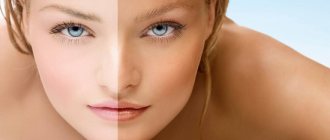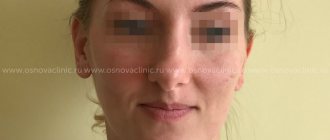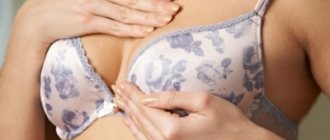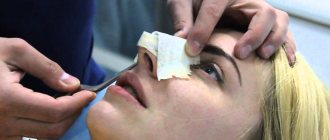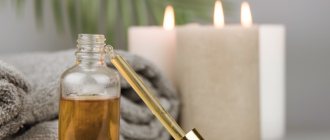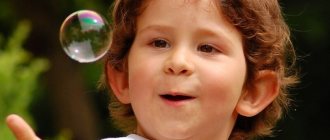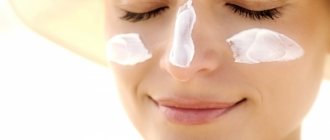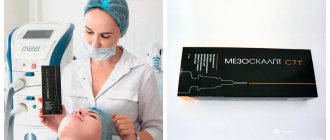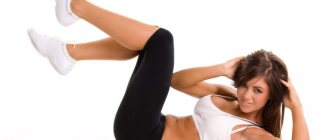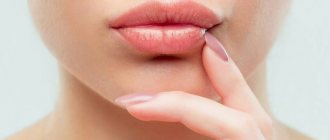Childhood injuries have always been and will be a pressing issue. First of all, this is due to the increased physical activity of young children. Older children are no exception. Walking, going to school, or visiting your favorite sports section often ends with one or another degree of damage to the skin and soft tissues. When faced with this problem, parents often ask questions: “How to provide first aid to a child who is bruised? Which means can be used and which cannot? When should you consult a doctor? What is the best ointment for bruises for children?». These are the most common questions that parents ask their pediatrician or pediatric traumatologist. In this article we will try to analyze in more detail the main types of closed soft tissue injuries in children, first aid for injury, and a rating of the best medicines for bruises. Let us pay attention to the positive and negative qualities of each drug, and, most importantly, we will indicate the most popular remedies for bruises, depending on the age of the baby.
Types of soft tissue injuries in children
When considering traumatic injuries in children, it is necessary to mention that this issue is quite extensive and labor-intensive. It’s not for nothing that there is a separate science that studies these issues – traumatology. We will try to consider this topic from the pediatrics perspective.
In this regard, we will dwell in more detail on such damage as:
- Injury.
- Break.
- Shake.
These injuries, according to the classification, can be classified as closed soft tissue injuries.
Damage to soft tissues in children is a fairly common problem.
Below we will consider each type of damage, as well as its signs in the baby.
Shake
A concussion is understood as a mechanical effect on the body, which leads to functional changes in the organ without visible damage. When we talk about a concussion, we often mean a concussion.
Symptoms of a concussion:
- Headache.
- Dizziness.
- Nausea.
- Vomit.
- Double vision.
- Loss of consciousness and seizures may occur.
It is worth noting that a child’s head injury always requires consultation with a doctor and a number of instrumental examination methods.
Injury
A bruise is a mechanical injury that is not accompanied by a violation of the anatomical integrity. As a rule, the skin, subcutaneous fat, and muscle tissue are bruised. The cause of this damage is often a fall or impact with various objects.
Symptoms of a bruise in a baby:
- Pain. As a rule, pain occurs immediately. The degree of pain depends on the conditions of the injury and the force of the impact, the type of object or coating. A particularly painful area in children is the periosteum. Within one to two hours, the pain subsides, but may reappear if the hematoma grows.
- Swelling. Swelling forms almost instantly after injury. It is painful when pressed, and also does not have clear boundaries with healthy tissue. Usually the swelling increases within several hours; in rare cases, swelling may increase for up to one day.
- The appearance of a hematoma. A hematoma is a bleeding into soft tissue. The severity of the hematoma primarily depends on the type of damaged vessel and the force of the blow. Most often in children, small vessels rupture with blood soaking the skin and subcutaneous fat. Outwardly it looks like a “bruise”.
- Impaired function. This refers to the limitation of active movements, for example, of the limbs. This is due to an increase in swelling and pain due to injury.
Restriction of movement in case of injury is associated with swelling and pain due to injury.
Gap
A rupture, in contrast to a bruise, is a lesion of soft tissue in which there is a violation of the anatomical integrity.
Highlight:
- Ligament rupture.
- Tendons.
- Muscle
Ligament ruptures are accompanied by severe pain, swelling, and the appearance of a hematoma. Dysfunction of the affected joint is also characteristic. Muscle tears occur less frequently. Such damage usually develops with a large impact of gravity, a strong blow to the contracted muscles, or a rapid, strong contraction. A muscle tear has different symptoms, depending on the severity of the tear. As a rule, children experience incomplete ruptures. Children experience immediate severe pain, followed by the appearance of swelling and hematoma. The mechanism of formation of tendon rupture is similar to the mechanism of muscle rupture. When tendons rupture, children complain of pain, and a specific place of greatest pain is noted at the site of the rupture. The most characteristic symptom to distinguish from other injuries is loss of function of the muscle whose tendon is damaged.
Often injuries are accompanied by the appearance of wounds. You can find out more about this problem in our article.
Causes of a black eye and its consequences
In most cases, the appearance of a black eye under the eye is preceded by a strong blow, which cannot be ignored. Such an injury can occur for completely different reasons: for example, when playing sports, participating in a fight, or accidentally bumping into a blunt object.
Other most common causes of bruising include:
- consequences after cosmetic eye surgery;
- sinus infection;
- consequences after surgery on the paranasal sinuses;
- dental infections;
- consequences after dental manipulations and much more.
All of the above reasons for the appearance of bruises under the eyes are unpleasant in themselves and can, in addition to hematoma, provoke the development of even more serious situations. For example, a strong blow to the eye area can cause hyphema, intraocular bleeding in the space between the back of the cornea and the front surface of the iris. In turn, hyphema requires urgent medical attention, as it can lead to increased intraocular pressure and complete loss of vision from glaucoma.
In addition, in some cases, a black eye may be accompanied by redness of the sclera. This condition is called subconjunctival hemorrhage and usually goes away on its own after a few weeks.
First aid for a child's injury
- Calm the baby and take a comfortable position.
- Inspect the site of injury to rule out dislocations and fractures.
- Apply cold to the injury site.
- Assume, if possible, an elevated position of the affected limb.
- Lubricate the affected limb with bruise ointment. In case of severe pain, it is possible to prescribe painkillers orally.
Which ointment is best to use depending on age, and which one will be more effective, we will consider further.
How to get rid of bags under the eyes
Specialists at cosmetology clinics accept a patient for treatment if she has the following indications:
- A clear groove is formed between the eyelid and the cheekbone;
- There is excessive deposition of a fat layer, which completely distorts the contour of the face;
- When the skin sagging, many small folds appear on the upper eyelid.
Rating of children's ointments for bruises
When choosing an ointment for bruises, it is necessary to take into account the age of the baby, as well as the severity of the damage. It is also very important to pay attention to the individual tolerance of the drug.
When choosing an ointment, be sure to consider the baby’s age and the degree of damage.
To relieve symptoms of bruises in children, use the following ointments:
- Rescuer . Suitable for use in young children. Contains useful natural components that quickly relieve pain and inflammation (essential oils, vitamins, beeswax components, etc.).
- Bruise-OFF . It can also be used in young children. Contains pentoxifylline, as well as medicinal leech extract. It is an ointment for bruises and bruises for children.
- Heparin ointment . Contains heparin, benzocaine and other substances. It has a stronger anti-inflammatory and analgesic effect. Used in children aged two years and older.
- Lyoton . It also contains heparin.
- Dolobene . Contains the same heparin. In addition to heparin, the active ingredients are dimethyl sulfoxide and dexpanthenol. Dimethyl sulfoxide promotes deeper penetration of other substances. Used in children over 5 years of age.
- Diclofenac . The name matches the active substance. A fairly popular remedy, which is a non-steroidal anti-inflammatory drug. It is an ointment for bruises with pain relief for children.
- Diklak . The active ingredient in Diclac is diclofenac. It is a non-steroidal anti-inflammatory drug. Has a good analgesic effect. Used in children over 6 years of age.
In adolescence, it is possible to use a wider range of medications, including ointments for bruises. We list the most effective of them:
- Finalgon.
- Reparil-gel.
- Troxevasin.
It is worth noting that warming (locally irritating) ointments are used not in the first hours after injury, but after 3-4 days. In the first hours, preference is given to painkillers and cooling agents.
There are a large number of ointments for bruises and sprains for children. It is very important to choose the most suitable remedy for your child. It all depends on the type of injury, as well as the age of the patient. It is important to remember that the ointment does not treat the disease, but only the symptom. Do not self-medicate; if traumatic injuries occur in your baby, contact a pediatrician or traumatologist.
Lyoton 1000
Lyoton 1000 is an antithrombotic drug for local use, which also has antiexudative (eliminating excessive vascular permeability and, as a consequence, swelling) and moderate anti-inflammatory effect. The pharmacologically active substance in Lyoton is heparin.
Heparin has been used in clinical practice since the beginning of the last century. His first specialization was chronic venous insufficiency. In 1928, its chemical properties were first described in detail and its composition was completely deciphered. It was found that heparin is a glycosaminoglycan, represented by an unbranched polysaccharide chain, including an amino sugar and uronic acid. The biochemical functions of heparin (in particular, its ability to prevent blood clotting) are ensured by the high acidity and negative charge of its molecule. Free heparin binds to antithrombin III, as a result of which it is activated and begins to block all serine proteases in the blood coagulation cascade. As a result, the activity of thrombin, coagulation factors IX, X, XI, XII, kallikrein and plasmin is suppressed. The anti-inflammatory effect of heparin is due to its ability to suppress the activity of immune cells and influence inflammatory mediators. This property of heparin has been repeatedly demonstrated in preclinical tests on animals and clinical studies involving patients with asthma, rheumatoid arthritis, allergic inflammation, postphlebitic syndrome, and inflammatory bowel diseases. It is necessary to note the positive effect of heparin on the vascular endothelium and the microcirculation system. This becomes possible due to the anticoagulant activity of the drug, as a result of which the rheological characteristics of the blood are improved and the normal intensity of venous flow is maintained. A decrease in blood viscosity under the influence of heparin leads to an improvement in venous and capillary perfusion, which helps eliminate swelling. Heparin is also useful for burns: its reepithelial and neoangiogenetic properties, regardless of the method of application (parenteral or external), provide pain reduction, suppression of thrombus formation and inflammation, restoration of blood flow and tissue regeneration.
Today it is known for certain that the degree of penetration of heparin into tissue is determined by its dose. Thus, when the heparin content in the gel is 300 IU/g, only 0.9 IU/g of the active substance penetrates into the subcutaneous tissue. An increase in the concentration of heparin in the dosage form to 1000 IU/g leads to a symmetrical increase in it in the subcutaneous tissue to 7.2 IU/g. In this regard, the most effective local heparin-containing dosage form is Lyoton 1000 gel. Thanks to the original composition of excipients, this drug is able to penetrate deep into the tissue, creating a sufficient therapeutic concentration of heparin within 1–1.5 hours after use. At the same time, Lyoton 1000 does not have a systemic effect on the body, acting only locally, which avoids negative side effects. The leading indication for the use of the drug is the treatment and prevention of one of the most common complications of varicose veins - thrombophlebitis of the superficial veins. This aspect of the use of Lyoton 1000 has been well studied and has a strong evidence base. In one of the studies (conducted, by the way, in Russia in 2008) the effectiveness of Lyoton 1000 was studied in patients suffering from varicose veins of the lower extremities. The results of this study confirmed the effectiveness of a course of use of Lyoton 1000 gel in relieving the symptoms of venous stasis: pain, heaviness in the legs, fatigue, swelling. Both the frequency of occurrence and the severity of these manifestations of varicose veins decreased by 1.5–2 times. All patients showed positive dynamics of their condition and good tolerability of the drug. The drug was especially effective in patients suffering from acute thrombophlebitis, which is explained by the local anti-inflammatory and anti-exudative effect of heparin.
Is it worth using Lyoton for wrinkles?
Well, since dermatologists themselves advise, then it’s probably worth it, you say? This is an excellent budget product (although, depending on how you look at it), which will help preserve youth, you say? What difference does it make what you put on it, you say? Let's figure it out.
Skin cells are, indeed, the same everywhere, whether on the face or, excuse me, on the butt. But there is just one significant BUT:
the skin on the face is the most vulnerable: it is exposed around the clock to various, sometimes aggressive influences from the outside, for example, the sun, wind, cold;
the face is the area where the layer of skin is thinnest and most heterogeneous;
The skin of the face contains more sebaceous glands than, for example, the skin of the hands.
And this list could be continued, but the main idea is already clear. There is still a difference.
But Lyoton 1000 gel, after all, is intended for legs, and on the face it may not behave as you would like, especially with prolonged use.
How does Lyoton gel work?
Lyoton is a gel for external use, which includes:
sodium heparin (main active ingredient);
carbomer 940 (synthetic thickener, widely used in cosmetology);
methyl parahydroxybenzoate (preservative and antiseptic):
propyl parahydroxybenzoate (preservative, very common in cosmetics);
neroli oil (essential oil from orange flowers);
lavender oil (essential oil from lavender flowers);
trolamine or triethanolamine (often used as an active element in sunscreen and pain creams);
We will pay attention to the active substance, that is, heparin; all the “magic” lies in it.
Heparin is a drug that inhibits blood clotting, improves blood flow and the basic properties of blood. Heparin-based products are used to relieve swelling, eliminate bruises, spider veins and the like.
Therefore, many beauties use Lyoton on the face to remove bags under the eyes, bruises, general puffiness that leads to wrinkles, and generally give freshness to the face.
Article on the topic: How to properly do sugaring at home: preparation, recipes, secrets.
